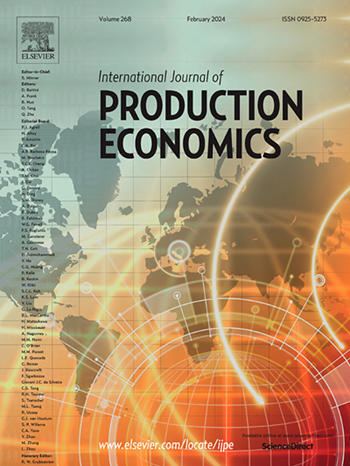集装箱码头自动起重车辆两阶段作业的随机建模与分析:一种新颖的排队方法
IF 9.8
1区 工程技术
Q1 ENGINEERING, INDUSTRIAL
引用次数: 0
摘要
世界各地的集装箱码头都在采用自动化技术来提高效率和吞吐量,以满足动态业务需求。然而,为了实现自动化集装箱码头的预期成本和运行效率,有必要在设计阶段对其在各种设计参数下的性能进行深入分析。在本文中,我们提出了一个新的排队模型,用于集装箱码头的性能分析,使用自动起重车辆进行集装箱运输。采用一种特殊类型的两相服务器来捕捉码头起重机、自动起重车和堆垛起重机的复杂两相操作,这在以往的研究中被忽视。由于现有的方法不能解决我们的结果排队模型,我们开发了一种新的基于网络分解的方法来解决它。首先,我们通过开发仿真模型验证了所提出的分析框架,并发现它非常准确,在平均吞吐量时间内平均绝对百分比误差小于5%。接下来,我们量化了集装箱码头资源的两阶段操作准确建模的价值。在我们的数值分析中,我们发现忽略两阶段操作可能导致平均吞吐量时间从25%高估到65%。因此,我们的新建模方法有助于终端设计师准确估计性能指标。此外,我们说明了我们的模型在资源规划中的应用,并提供了重要的设计见解。本文章由计算机程序翻译,如有差异,请以英文原文为准。
Stochastic modeling and analysis of two-phase operations in container terminal with automated lifting vehicles: A novel queuing approach
Container terminals worldwide are embracing automation to improve their efficiency and throughput performance for dynamic business requirements. However, to achieve the desired cost and operational efficiency of an automated container terminal, a thorough analysis of its performance under various design parameters is necessary at the design stage. In this paper, we propose a novel queuing model for the performance analysis of a container terminal that uses automated lifting vehicles for container transport. A special type of two-phase server is used to capture complex two-phase operations of quay cranes, automated lifting vehicles, and stack cranes, which were ignored in previous studies. Since existing methods cannot solve our resulting queuing model, we develop a new network decomposition-based approach to solve it. First, we validate the proposed analytical framework by developing a simulation model and find that it is quite accurate with a less than 5% average absolute percentage error in the average throughput time. Next, we quantify the value of accurately modeling the two-phase operations of resources in a container terminal. In our numerical analysis, we find that ignoring two-phase operations can lead to an overestimation of the average throughput time from 25% to 65%. Thus, our new modeling approach assists terminal designers in accurately estimating the performance measures. Furthermore, we illustrate an application of our model in resource planning and provide important design insights.
求助全文
通过发布文献求助,成功后即可免费获取论文全文。
去求助
来源期刊
CiteScore
21.40
自引率
7.50%
发文量
266
审稿时长
52 days
期刊介绍:
The International Journal of Production Economics focuses on the interface between engineering and management. It covers all aspects of manufacturing and process industries, as well as production in general. The journal is interdisciplinary, considering activities throughout the product life cycle and material flow cycle. It aims to disseminate knowledge for improving industrial practice and strengthening the theoretical base for decision making. The journal serves as a forum for exchanging ideas and presenting new developments in theory and application, combining academic standards with practical value for industrial applications.

 求助内容:
求助内容: 应助结果提醒方式:
应助结果提醒方式:


